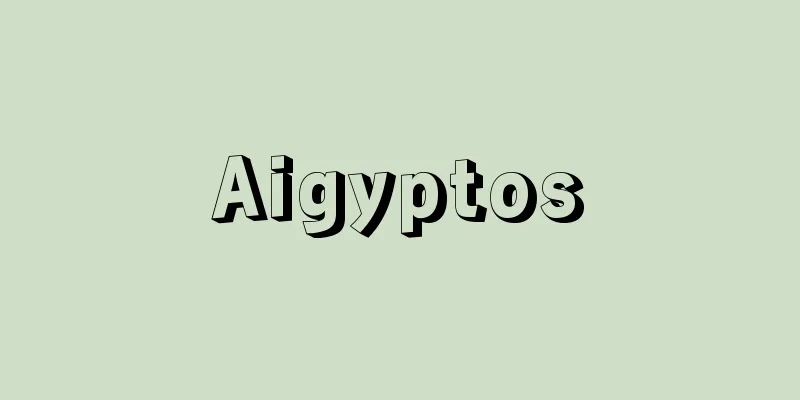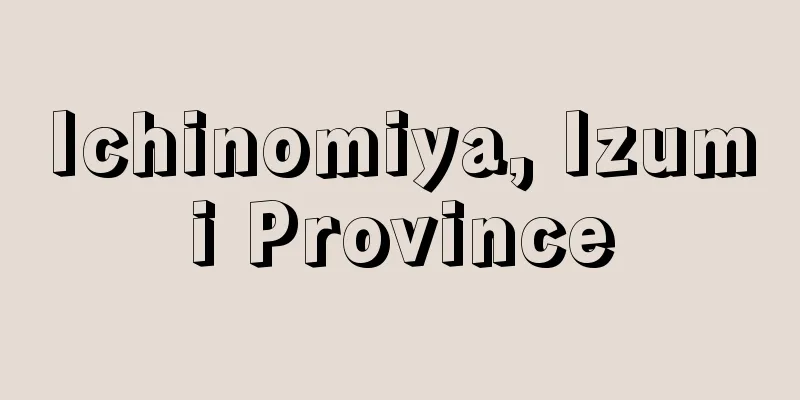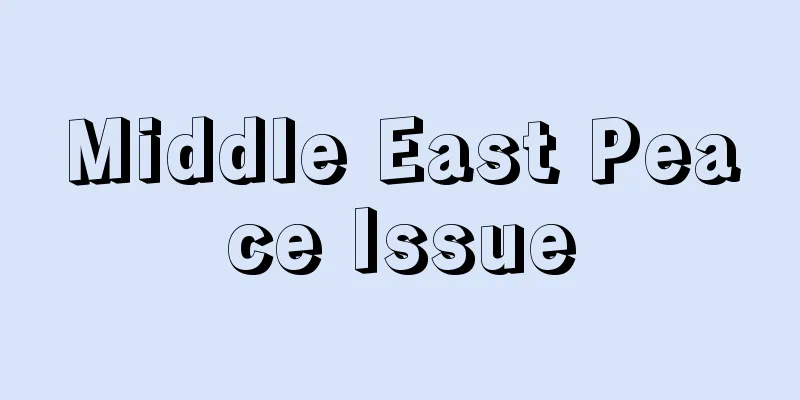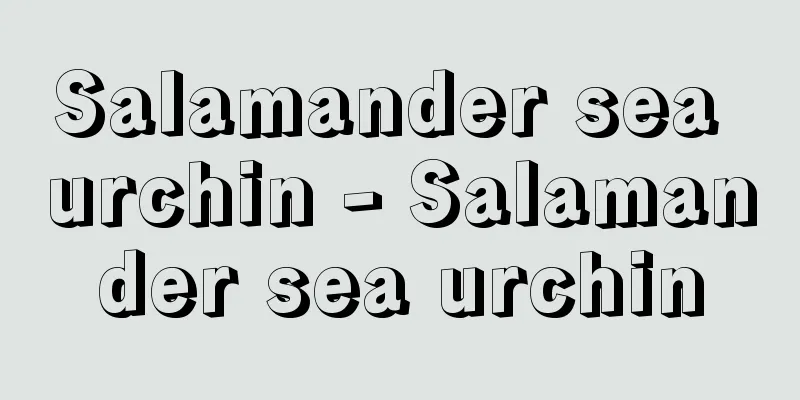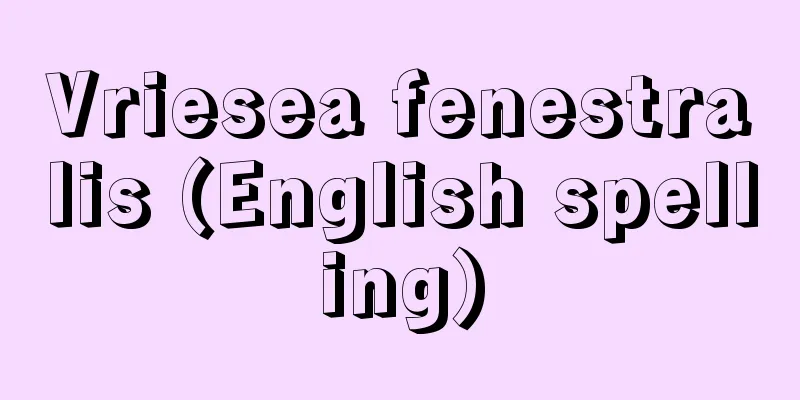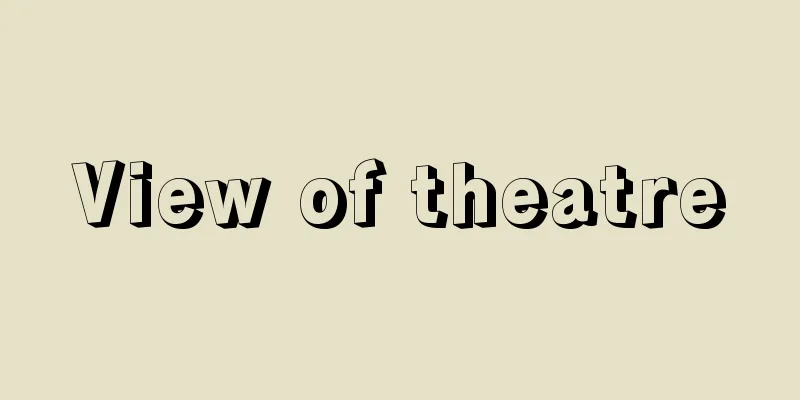Coat of arms - Monsho

|
A seal that depicts a design of an animal, plant, object, etc. to represent a family or group. [Takeshi Endo] JapanIn the case of nobles and samurai, the symbols used are often related to the genealogical title or surname of the clan to which they belong, while in the case of commoners, they are often related to the surnames given to them after the Meiji period. [Takeshi Endo] historyThere are theories that family crests were first used as family symbols on flags and curtains during the Hogen and Heiji eras (1156-1160), or that they originated with Minamoto no Yoritomo, but they should probably have originally been invented to help nobles distinguish their cars from those of others when traveling to and from the Imperial Palace. The exact date of their creation is unclear, but it is likely that in the mid-Heian period, the Fujiwara clan and others began to place importance on lineage and affiliation, and so they wore their family crests as a mark of their own family at ceremonies and other occasions, finding them convenient for identification. Furthermore, formal family crests came to have such a force that they overpowered others. While the crests of noble families were often elegant, those of samurai families were practical, originating as markers on flags and curtains to distinguish friendly and enemy camps on the battlefield, and are characterized by their simple yet easily identifiable geometric patterns. In particular, as wars between warlords continued, it became necessary for military commanders to always be familiar with the crests of local warlords, to the point that a book titled "Kenbun Shokamon" (The Observations of Various Kamon) was even published for this purpose. The Battle of Sekigahara marked the beginning of a period of peace. Arms, weapons, flags, banners, and horse banners became unnecessary, and a major change was made in the use of heraldic symbols. In other words, family crests became necessary to ensure the dignity of samurai. In terms of ceremonies, rules were established for the type of clothing to indicate one's family status and lineage. There was a need to clearly display family crests in processions when going to Edo for alternate attendance or to the castle, and the year after the Meireki fire (1657), a book equivalent to the later "Bukkan" called "Daimyo Gomon Zukushi" was published. The continuation of a period of peace, when bows were carried in bags and swords in sheaths, naturally created a trend of extravagance, and family crests began to be used on clothing and furnishings. Here, family crests became popular as decorations rather than as a way to ensure dignity. Thus, with the Genroku culture as a backdrop, Date crest, Kaga crest, Kanoko crest, Kuzushi crest, Hiyoku crest, etc. gradually became popular. Furthermore, with the development of the monetary economy and the rise of commerce, the custom of preferring strange and unusual crests, even more so than those of the samurai, became popular among wealthy townspeople as well, and it became fashionable among women to enjoy wearing the crests of Kabuki actors on hair ornaments and accessories rather than their own family crests, a trend that continued until the end of the Edo period. With the establishment of the new Meiji government, changes were made to the dress code, and Western clothing began to be used instead of traditional Japanese clothing. As in the Edo period, traditional Japanese clothing was still in vogue for wedding furnishings and bridal attire, but with the development of modern capitalism, the industrial sector began to manufacture and sell its own products, and so emblems were created as symbols. These came to play an important role apart from family crests, and eventually developed into emblems for cities and organizations, and this influence continues to this day. [Takeshi Endo] kindsThere are a great many Japanese coats of arms, totaling approximately 2,800 types, which suggests their popularity in feudal society. However, fewer than 100 of these are in use today, and even if you include Datemon (flashy designs of landscapes, flowers and birds, used by geisha and other entertainers), it is thought that there are only around 300 types. Subjects for crests include the sun, moon, and stars, as well as plants, animals, furnishings, letters, and natural phenomena, but even if the crest of aristocrats and samurai is the same, the latter may add a sword to represent martial spirit. Examples include the sword and vine, the clove, the plum blossom, and the diamond. Plants were the most commonly used family crests, with the paulownia tree coming first, followed by wisteria, chrysanthemum, ivy, bamboo grass, vine, plum, and bellflower. Other examples include the comma shaped crest, Chinese flower and rhombus, nine-star pattern, butterfly, quince, two-pronged clover, and eye knot. Other familiar designs include hawk feathers, geta, Genji cartwheel, uroko, and tsuru. [Takeshi Endo] WesternHistoryThe heraldic system was established in the West in the late 12th century, but similar symbols can be found in ancient countries before that time. For example, the sun symbol on the shield in the mural of the tomb of King Tutankhamun in Egypt, the four circles within a circle on the shield of the Persepolis Palace relief in ancient Persia, the Medusa's head, lions, eagles, and boars on the warrior shields depicted on ancient Greek vases, and the Athenian owl, Corinthian Pegasus, and Cretan Minotaur on Greek coins. There is a lack of documentary evidence as to whether these symbols were permanently used as the emblems of individuals or groups, but they are thought to be the precursors of later coats of arms. The establishment of a heraldic system means that each person (or each organization) has their own coat of arms, which is continuous and socially recognized (by the king, registered at the College of Arms, etc.). The motivation behind the creation of such a system was the Crusades and the javelin tournaments of knights. The knights who served in the Crusades, which began at the end of the 11th century, needed to distinguish themselves from others in large-scale mass battles, so they imitated the Islamic Assassin Knights and put marks on their cloaks. For example, the Knights Templar had a red Maltese cross (a cross with two tips), the Knights of Malta had the same cross in white, and the Teutonic Knights had a pâté cross (a cross with a wide tip). This was the beginning of group coats of arms, and later kings and nobles began to use their own coats of arms, and then, with the popularity of jousting tournaments, each knight used a coat of arms to identify himself. Later, clergy, cities, universities, and merchant and industrial guilds also began to use coats of arms in a similar style. As for the representative royal coat of arms, England has used three lions since Richard the Lionheart (reigned 1189-1199), but the lion was originally used by Norman kings, and William, Duke of Normandy (reigned 1066-1087), who conquered England, used two lions, which has remained to this day (the coat of arms of Normandy, France, still has two lions). Furthermore, in 1837, the Scottish lion and the Irish harp were added to the coat of arms. The coat of arms of the French kings is a fleur-de-lis on a blue background, which is the emblem of the Virgin Mary and first appeared on the seal of Louis VII (reigned 1137-1180). It was originally a scatter pattern, but it was decided to have three lions under Charles V (reigned 1364-1380). In Germany, the eagle, a symbol of ancient Rome, was used to represent the Holy Roman Emperor as the successor to the Roman Emperor around 1100, and is still used as the national emblem in Germany today. Imperial Russia also used the double-headed eagle as its coat of arms to refer to the successor to the Roman Emperor. The coat of arms of cities is that of London with the cross of St. George and the sword of the patron saint, St. Paul; that of Paris with a galley representing the old river port and the royal coat of arms of the fleur-de-lis on a blue field; and that of Geneva with an eagle representing a province directly under the Holy Roman Emperor and a key, the symbol of the patron saint, St. Peter. [Masato Takahashi] Coat of arms styleCoats of arms are called coats of arms, arms, heraldry, etc. in English, and in other countries they are called arms (French), stemma (Italian), wappen (German), etc. In addition to regular coats of arms, badges are also used. The form of coats of arms was initially a shield (escutcheon) with a lion or other shape placed inside it, or a shield divided into pieces and colored, but gradually accessories were added around it, and in the coats of arms of the British royal family, etc., a shield is used in the center with a helmet on top, a wreath or crown on top of that, a crest on top of that, mantlings on both sides of the helmet, supporters (animals or people, etc.) on both sides of the shield, and a motto (slogan) on the bottom, which is the standard form. The shield-shaped crest was originally one, but due to marriage or the addition of other countries to the territory, the shield has been divided and other crests added. Although each family uses the same crest, differences are added to distinguish them, such as a comb-shaped crest for the eldest son and a crescent moon for the second son. The badge may be a part of a coat of arms or a different shape. In the UK, the badge is the rose for England, the thistle for Scotland, the red dragon for Wales, the clover or harp for Ireland, the white rose for the House of York and the red rose for the House of Lancaster, famous for the War of the Roses. Henry the Navigator of Portugal also used a celestial globe as his badge. In modern armies, it is common for regiments to use different badges. Some coats of arms indicate occupations and ranks. The coats of arms of clergymen include a hat and tassel, with the color of the hat varying depending on the rank, and the higher the position, the more knots on the tassel. In the early modern period, high-ranking government officials and military personnel had coats of arms that added a symbol indicating their rank to the shield-shaped crest of their respective coats of arms. [Masato Takahashi] "Japanese Heraldry" by Numata Yosuke (1928, Meiji Shoin)" ▽ "The Great Illustrated Encyclopedia of Western Heraldry" by Walter Leonhard, translated by Sumoto Yukiko (1979, Bijutsu Shuppansha)" ▽ "Illustrated Symbol Design - Meaning and History" by Takahashi Masato (1981, David Publishing) [Reference item] | |©Shogakukan "> Names of the parts of a coat of arms (Western) ©Shogakukan "> Western Coat of Arms ©Shogakukan "> Western coat of arms (example of a badge) ©Shogakukan "> Western heraldic designs ©Shogakukan "> Western Coat of Arms Designs (Differencing) ©Shogakukan "> Western heraldic designs (marshalling) The coat of arms of Paris on a bridge over the Seine. It combines a galley, which represents an old river port, with the French royal coat of arms of "lilies on a blue field." France, Paris ©Shogakukan "> Coat of arms of Paris Source: Shogakukan Encyclopedia Nipponica About Encyclopedia Nipponica Information | Legend |
|
家柄、団体を表すために、動植物や器物などを図案化した印。 [遠藤 武] 日本公家(くげ)と武家の場合は、その家が属している氏族の系譜上の称号、苗字(みょうじ)と関係のあるもの、庶民の場合は、明治以後につけられた苗字と関係あるものが多く、図紋として用いられている。 [遠藤 武] 歴史家紋は、保元(ほうげん)・平治(へいじ)(1156~1160)のころ、旗や幕に家の印として用いられたとか、源頼朝(よりとも)に始まるという説があるが、本来は公家が車で宮中に出入りする際に、自分の車と他人の車を識別するために考案されたとみるべきであろう。その成立年代ははっきりとしないが、おそらくは平安時代の中期に、藤原一門などで門地門閥を重んずる風潮が盛んとなり、儀式その他において自家の標識として家紋をつけ、それによって識別の便利さを知ったのであろう。さらに格式ある家紋は、家紋によって他を圧するほどの勢いをもつようになっていった。 公家の家紋は優雅なものが多く、武家の家紋は実用的で、戦いの場において、敵味方の陣地識別のために旗や幕に用いて目印としたのに始まり、簡略で、しかも識別しやすい幾何学模様が多いのが特色といえる。ことに群雄割拠して互いにしのぎを削るような争いが続くにつれて、一軍の将たる者は、地方の群雄の家紋をつねに熟知しなくてはならなくなり、このために『見聞諸家紋』という書籍さえ刊行されるほどであった。 関ヶ原の戦いを契機として、太平の世の基盤ができて、武具、武器、旗、幟、馬印などは無用のものとなり、紋章の用途のうえに一大変革が行われた。つまり家紋は、武士の威儀を正すのに必要なものとなり、儀礼のうえからも、自己の家格門地を表す服装の決まりができて、参勤交代あるいは登城をするときの行列に、家紋を明示する必要に迫られ明暦(めいれき)大火(1657)の翌年に『大名御紋盡(だいみょうごもんづくし)』という後世の「武鑑(ぶかん)」に相当するものが刊行された。弓は袋に刀は鞘(さや)にという太平の世の連続は、おのずから奢侈(しゃし)の風潮を生み、衣服、調度にまで家紋をあしらうようになり、ここに威儀を正すというよりも、装飾としての家紋が普及した。こうして、元禄(げんろく)文化を背景として伊達(だて)紋、加賀紋、鹿子(かのこ)紋、崩し紋、比翼紋などしだいに盛んになっていった。また貨幣経済の発達と商業の隆盛に伴って、富裕な町人の間にも、武家以上の異体異様の紋章を好む風習が流行し、婦女子の間では、自家の紋よりも歌舞伎(かぶき)者の紋を、髪飾りや装身具につけて楽しむことが流行し、江戸時代の末期まで盛行したのである。 明治の新政府となって、服制上にも変化がおこり、和服にかわって洋服を用いることが行われた。嫁入り調度品や花嫁衣装には、江戸時代と同じようにまだ和服全盛の時代であったが、近代資本主義の発達により、産業界では自社製品を製造販売することから、表徴としての記章が生まれた。そして、家紋とは別に重要な役割を演じ、ひいては都市あるいは団体の記章として発展、現在でもこの影響が受け継がれている。 [遠藤 武] 種類日本の紋章は実に多く、約2800種にも上り、封建社会でのその盛行がしのばれる。しかし今日行われているのは、そのうち100種にも満たず、伊達紋(山水、花鳥などをはでに図案化したもので、芸妓(げいぎ)などが用いる紋)を加えても、300種くらいのものと思われる。 紋章の対象となるものは、日月星辰(せいしん)のほか、植物、動物、調度、文字、自然現象などであるが、そのなかでも公家と武家では、たとえ同一の紋章であっても、武家は尚武を表す意味から、剣が付加される場合がある。たとえば剣酢漿草(けんかたばみ)、丁字、梅鉢、菱(ひし)はその例である。家紋としてもっとも多く用いられたのは植物で、そのなかでも桐(きり)を第一とし、藤(ふじ)、菊、蔦(つた)、笹(ささ)、酢漿草、梅、桔梗(ききょう)の順となる。そのほか巴(ともえ)、唐花(からはな)菱、九曜(くよう)、蝶(ちょう)、木瓜(もっこう)、引両(ひきりょう)、目結(めゆい)などがある。そのほかなじみが深いものに、鷹羽(たかのは)、井桁(げた)、源氏車、鱗(うろこ)、鶴(つる)などがある。 [遠藤 武] 西洋沿革西洋で紋章制度が確立されたのは12世紀後期であるが、それ以前の古代諸国にも、紋章類似のものが認められる。たとえばエジプトのツタンカーメン王の墓の壁画にある盾の太陽シンボル、古代ペルシアのペルセポリス宮殿浮彫りの盾にある円の中の4個の円の紋、古代ギリシアの壺(つぼ)に描かれた戦士の盾にみられるメドゥーサの首、獅子(しし)、鷲(わし)、イノシシなど、また、ギリシアの貨幣にあるアテネのフクロウ、コリントのペガサス、クレタのミノタウロスなどである。これらのしるしが個人や団体の標章として永続的に用いられたかどうかについては記録的資料が乏しいが、後世の紋章の前身と考えられる。 紋章制度の確立という意味は、各人(あるいは各団体)が独自の紋をもち、これが継続的であって、社会的に公認されること(国王の認可、紋章院の登録など)である。このような制度が生まれたのは、十字軍の戦いや、騎士の槍(やり)試合などが動機となっている。11世紀末に始まった十字軍に従軍の騎士団は、大規模な集団戦闘で彼我の識別が必要となり、イスラムのアササン騎士団をまねて、マントに目印をつけた。たとえば、聖堂騎士団は赤のマルチーズ十字(先端が二つに分かれた十字)、マルタ騎士団は白で同じ十字、チュートン騎士団はパテ十字(先端が広がった十字)である。これが集団の紋章の始まりで、その後、王、諸侯が各自の紋章を用いるようになり、さらに騎士の槍試合の流行で、各騎士が識別のために紋章を用いた。また、のちには聖職者、都市、大学、商工業者ギルドなども、同じような形式の紋章を用いるようになった。 国王の紋で代表的なものをあげると、イングランドでは、獅子心王リチャード(在位1189~1199)から3匹の獅子を用いているが、獅子はもとノルマン王のもので、イングランドを征服したノルマンディー公ウィリアム(在位1066~1087)が2匹の獅子を用いたのがもととなり今日に至っている(フランス・ノルマンディーの紋は現在でも2匹の獅子)。さらに1837年から、スコットランドの獅子、アイルランドの竪琴(たてごと)が紋章に加えられた。フランス王の紋は青地にユリであるが、これは処女マリアの標章で、ルイ7世(在位1137~1180)のシールに現れたのが最初である。初め散らし模様であったが、シャルル5世(在位1364~1380)から3個と定められた。ドイツでは、ローマ皇帝の継承者としての神聖ローマ皇帝を表すため、1100年ごろから、古代ローマのシンボルである鷲を用いたが、現在のドイツでも国章として用いている。帝政ロシアでも、やはりローマ皇帝の後継者を呼称して、双頭の鷲を紋章とした。 都市の紋章として、ロンドンは聖ジョージの十字と、守護聖人聖ポールの剣、パリは古い河港を表すガレー船と、王室の「青地にユリ」の紋の組合せ、ジュネーブは神聖ローマ皇帝直属の管区を示す鷲と、守護聖人聖ピーターのシンボルである鍵(かぎ)の組合せである。 [高橋正人] 紋章の形式紋章は英語でコート・オブ・アームズcoat of arms、アームズarms、ヘラルドリーheraldryなどとよばれ、他の国ではアルムarmes(フランス語)、ステンマstemma(イタリア語)、ワッペンwappen(ドイツ語)などとよばれる。また正規の紋章と並行的に、バッジbadgeとよぶ標章が用いられる。コート・オブ・アームズの形式は、初期には盾形(シールドshield、エスカチオンescutcheon)の中に獅子などの形を置くか、盾形を分割して色を施すだけであったが、しだいに周りに付属物が加えられ、イギリス王室などの紋章では、盾形を中心として、上にヘルメット、さらにその上に花環または王冠、その上にクレスト、ヘルメットの両側にマントリング、盾形の両側にサポーターズ(獣あるいは人物など)、下にモットー(標語)という形が用いられ、これが標準的形式となっている。盾形の紋はもと一つであったが、結婚とか、他国を領土に加えるなどによって、盾形の中を分割して、他の紋を加えることが行われている。紋章は家族が同じ形を用いるが、長男は櫛(くし)形、次男は三日月というように、ディファレンスとよぶしるしを付加して区別している。 バッジには紋章の一部、または別の形が用いられる。イギリスでは、イングランドがバラ、スコットランドがアザミ、ウェールズが赤いドラゴン、アイルランドがクローバまたは竪琴をバッジとし、ばら戦争で有名なヨーク家は白バラ、ランカスター家は赤バラである。またポルトガルのエンリケ航海王子は天球儀をバッジとした。近代の軍隊では、連隊ごとにバッジを用いることが一般化されている。 紋章には職種、身分を示すものがある。聖職者の紋には、帽子と房が加えられ、身分によって帽子の色が違い、高級職ほど房の結び目が多い形式である。また近世の高級官吏、軍人には、各自の紋の盾形に、役職を示すシンボルを加えた紋章がある。 [高橋正人] 『沼田頼輔著『日本紋章学』(1928・明治書院)』▽『ヴァルター・レオンハード著、須本由喜子訳『西洋紋章大図鑑』(1979・美術出版社)』▽『高橋正人著『図説シンボルデザイン――意味と歴史』(1981・ダヴィッド社)』 [参照項目] | |©Shogakukan"> 紋章の各部名称(西洋) ©Shogakukan"> 西洋の紋章 ©Shogakukan"> 西洋の紋章(バッジの例) ©Shogakukan"> 西洋の紋章の図形 ©Shogakukan"> 西洋の紋章の図形(ディファレンシング) ©Shogakukan"> 西洋の紋章の図形(マーシャリング) セーヌ川に架かる橋に掲げられたパリの紋章。古い河港を表すガレー船と、「青地にユリ」のフランス王室の紋章を組み合わせたものである。フランス パリ©Shogakukan"> パリの紋章 出典 小学館 日本大百科全書(ニッポニカ)日本大百科全書(ニッポニカ)について 情報 | 凡例 |
Recommend
Kardee Alkudart - Kardee Alkudart
...The caliph was responsible for implementing Is...
Oka Kitaro - Okaonitarou
Theater critic, playwright, novelist. Born on Aug...
Yellow paper
〘Noun〙① Yellow paper. Also, paper that has been dy...
Rubashka (Rubashika) (Russian)
A loose-fitting blouse-like national costume worn...
desplante
…Originally developed among the gypsies who settl...
Appen, K. von - Appen
…His work with the Berliner Ensemble won worldwid...
Fanta
…the Fante state confederation was formed in the ...
Blancmange
〘 noun 〙 (from blancmanger) A confectionery made b...
theVirgin
…In the West, especially after the 12th century, ...
Tadatsugu Sakai - Tadatsugu Sakai
A senior vassal who contributed greatly to Tokuga...
Sulidae
…A general term for birds of the family Sulidae i...
Tokoname ware - Tokoname ware
A general term for pottery from Chita Peninsula, ...
Seguidilla - Seguidilla (English spelling) Spanish
A typical Spanish folk dance. It originated in La ...
Connochaetes gnou (English spelling)
…[Yoshiharu Imaizumi]. … *Some of the terminology...
Merger - Gattai Gappei
…The merger boom died down as the Japanese econom...
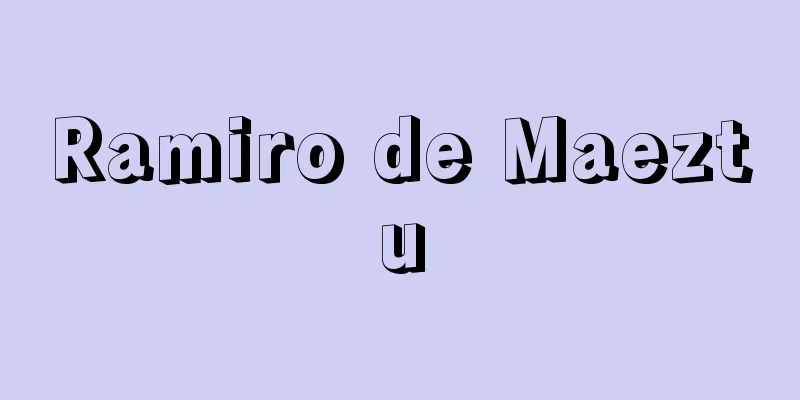

![Mastiff [Breed] - Mastiff](/upload/images/67cce59989427.webp)
